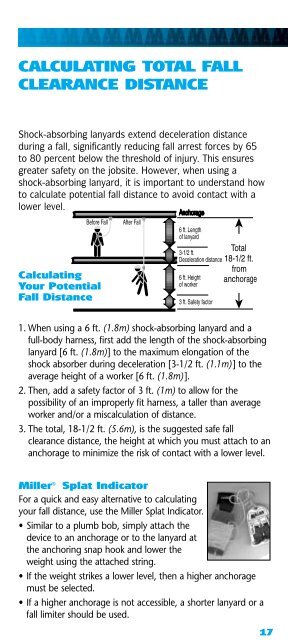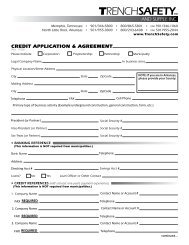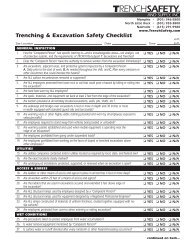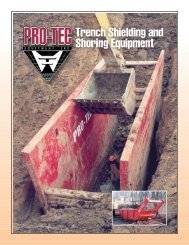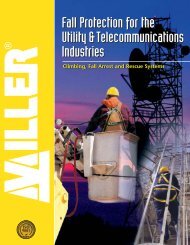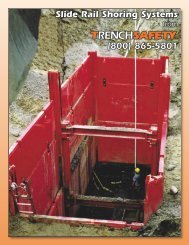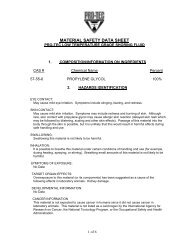Fall Protection Program Considerations - Trench Safety
Fall Protection Program Considerations - Trench Safety
Fall Protection Program Considerations - Trench Safety
- No tags were found...
Create successful ePaper yourself
Turn your PDF publications into a flip-book with our unique Google optimized e-Paper software.
CALCULATING TOTAL FALLCLEARANCE DISTANCEShock-absorbing lanyards extend deceleration distanceduring a fall, significantly reducing fall arrest forces by 65to 80 percent below the threshold of injury. This ensuresgreater safety on the jobsite. However, when using ashock-absorbing lanyard, it is important to understand howto calculate potential fall distance to avoid contact with alower level.CalculatingYour Potential<strong>Fall</strong> Distance1. When using a 6 ft. (1.8m) shock-absorbing lanyard and afull-body harness, first add the length of the shock-absorbinglanyard [6 ft. (1.8m)] to the maximum elongation of theshock absorber during deceleration [3-1/2 ft. (1.1m)] to theaverage height of a worker [6 ft. (1.8m)].2. Then, add a safety factor of 3 ft. (1m) to allow for thepossibility of an improperly fit harness, a taller than averageworker and/or a miscalculation of distance.3. The total, 18-1/2 ft. (5.6m), is the suggested safe fallclearance distance, the height at which you must attach to ananchorage to minimize the risk of contact with a lower level.Miller ® Splat IndicatorFor a quick and easy alternative to calculatingyour fall distance, use the Miller Splat Indicator.• Similar to a plumb bob, simply attach thedevice to an anchorage or to the lanyard atthe anchoring snap hook and lower theweight using the attached string.• If the weight strikes a lower level, then a higher anchoragemust be selected.• If a higher anchorage is not accessible, a shorter lanyard or afall limiter should be used.17


